transcript
transcript
E.U. Plans to Halt Vaccine Exports Until Supply Contracts Are Met
The European Union announced a plan that would effectively stop AstraZeneca from shipping Covid-19 vaccine doses manufactured in the bloc to other countries until its E.U. supply contracts are met.
-
The commission has adopted a strictly targeted measure that will allow us to gather accurate information about the production of vaccines and where manufacturers intend to ship them. The measure is time-limited and specifically applies to those Covid-19 vaccines that were agreed by advance purchase agreements. The measure is intended to run until the end of March. The aim is to provide us immediately with full transparency, transparency that until now has been lacking, and what Europeans expect. And if needed, it also will provide us with a tool to ensure vaccine deliveries.
BRUSSELS — The European Union on Friday announced plans to effectively halt any attempt by AstraZeneca to move vaccine doses manufactured in the bloc to other countries unless it first meets its supply obligations to the bloc’s 27 member states.
The move, the latest escalation in a dispute between the bloc and the pharmaceutical company over reduced supplies, came as the European Union’s drug regulator authorized AstraZeneca’s coronavirus vaccine for use across its member states.
AstraZeneca said this month that it would significantly cut its promised delivery supply of the jab to the European Union as of mid-February. That pitted the bloc against Britain, a former member, which has been receiving a steady flow of vaccine doses from AstraZeneca since approving it well ahead of the E.U., in early December.
The AstraZeneca vaccine was developed in cooperation with Britain’s University of Oxford. The European Union accused the pharmaceutical company of using its promised doses to serve Britain, despite having paid the company about $400 million in October to help it scale up its capabilities and produce doses ahead of authorization.
The policy announced by the European Commission on Friday, presented as a “transparency tool,” will ask all pharmaceutical companies manufacturing coronavirus vaccines in factories within the bloc — currently Pfizer and AstraZeneca — to submit paperwork alerting the European authorities of any intention to move their products to non-E.U. countries. It will be in place until the end of March and will not apply to exports to poorer countries.
The Commission said it reserved the right to block such exports if it determined that the pharmaceutical companies were not meeting their contractual obligations with the E.U. first.
The measure could theoretically also affect Pfizer clients, but the Commission has said it is happy with how that company has handled a supply disruption in its Belgian factory that is setting back deliveries. The company has spread the pain among its clients, which include the E.U., Britain and Canada.
The Commission said that AstraZeneca’s decision to maintain delivery volumes to Britain while slashing its deliveries to the E.U., after a problem arose in a Belgium-based plant, was in bad faith and breach of the company’s contractual obligations.
The company’s chief executive responded that he regretted the situation, but that his company had not committed to a specific schedule, but rather to a vow to make its “best effort.”
The Commission dismissed the claim, and published a heavily redacted version of the contract with AstraZeneca. The contract affords the company many standard protections in case it fails to deliver, but includes some clauses that could be seen as favoring the E.U. interpretation that AstraZeneca is obligated to turn to other factories, including in Britain, to fulfill its delivery promises.
The matter is further complicated by regulation issues: The European drug regulator, the European Medicines Association, received an application for authorization from AstraZeneca on Jan. 12, nearly two weeks after the company received emergency authorization in Britain. The E.U. agency was expected to announce approval of use of the vaccine later on Friday.
The dispute with AstraZeneca is occurring against a backdrop of severe shortages of doses at vaccination centers across Europe. French and German regions have reported that they are nearly running out, and the Madrid region of Spain has suspended its rollout for at least two weeks until fresh deliveries arrive.
The E.U. regulator stopped short of imposing an age cap on the use of the vaccine, despite concerns about a paucity of data on the vaccine’s efficacy in people age 65 and older.
transcript
transcript
N.Y.C. Indoor Dining to Reopen on Valentine’s Day
On Friday, Gov. Andrew M. Cuomo announced that indoor dining in New York City could resume at up to 25 percent capacity starting on Valentine’s Day.
-
New York City restaurants, on our current trajectory, we can reopen indoor dining at 25 percent on Valentine’s Day. The restaurants want a period of time so they can notify workers. They can get up to speed for indoor dining, order supplies, etc. So we’re saying indoor dining. 25 percent on Valentine’s Day. Going forward, we are very excited about the possibility of reopening venues with testing. Restaurants are opened on Valentine’s Day. You could make a reservation now or plan dinner on Valentine’s Day, you propose on Valentine’s Day. And then you can have the wedding ceremony March 15, up to 150 people. People will actually come to your wedding because you can tell them with the testing, it will be safe. Everybody there will be tested, and everybody will be safe.
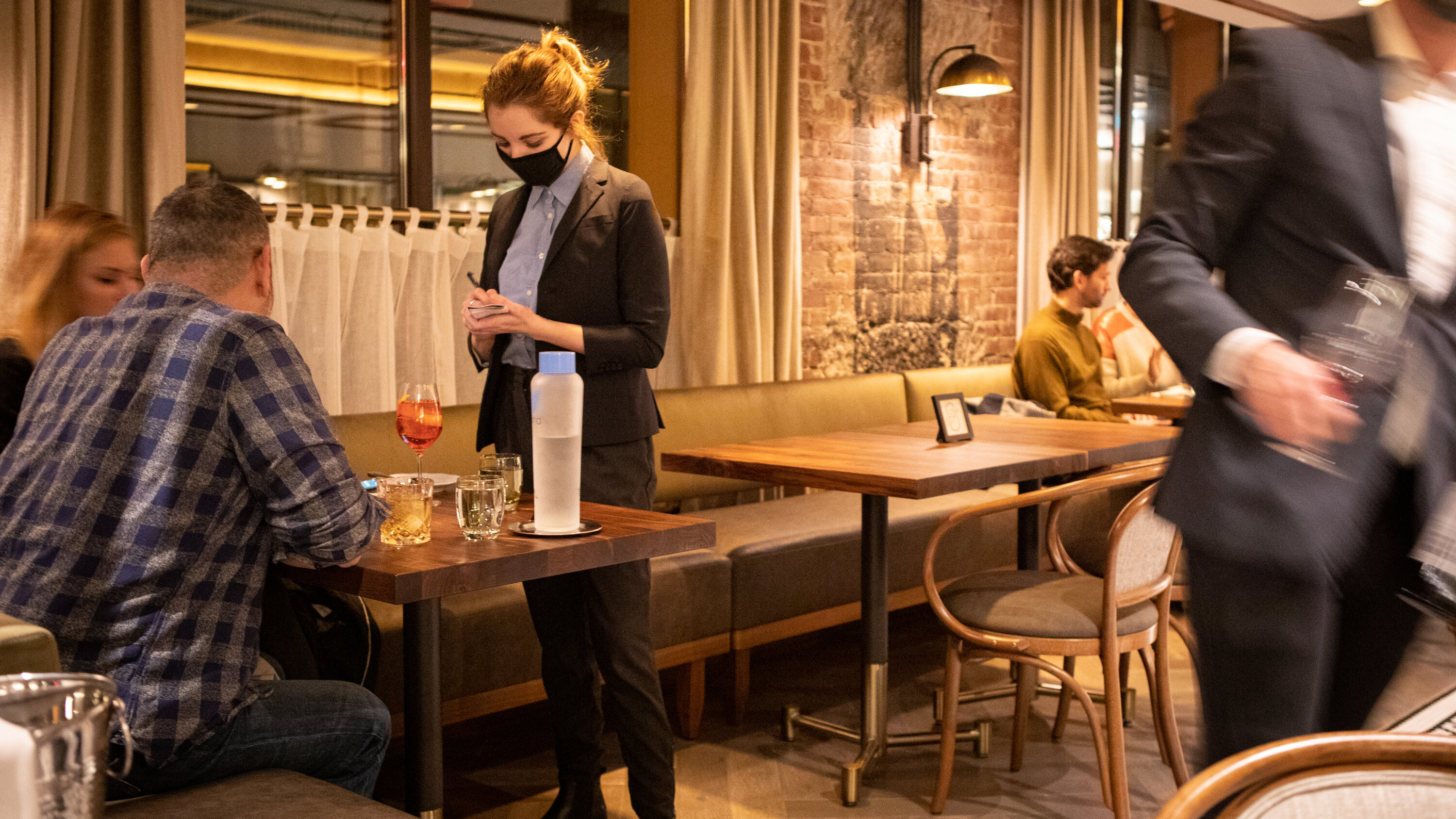
Indoor dining will resume with limited capacity in New York City restaurants next month, Gov. Andrew M. Cuomo announced on Friday, more than a month after he had banned it to combat a second wave of the coronavirus.
Starting on Feb. 14, the city’s restaurants can seat customers indoors at 25 percent maximum capacity, he said.
The announcement was a source of hope for the restaurant industry, an important driver of the city’s economic engine, which has been decimated by ever-changing virus-induced restrictions that have forced many restaurants and bars to go out of business and caused thousands of workers to lose their jobs.
After shutting down restaurants in March, Mr. Cuomo allowed the city’s indoor dining to restart in late September. He prohibited it again in mid-December as holiday travel threatened to increase transmission of the virus and overwhelm hospitals.
Restaurants and bars that have stayed afloat have relied on takeout and delivery, as well as outdoor dining, an increasingly untenable option as the frigid winter advances.
Starting March 15, wedding receptions with up to 150 attendees will be allowed in the state, the governor said, as long as the venues are at no more than 50 percent capacity. The gatherings would have to be approved in advance by a local health department, and all attendees will have to be tested.
“We want to use testing as the key to reopening events,” Mr. Cuomo said.
The governor’s decisions come at an incredibly precarious phase in the state’s battle against the virus, which has killed more than 42,500 people in New York State, a one-time center of the pandemic.
Yankee Stadium will open its doors as a mass vaccination site, Mr. Cuomo said, pointing to high positivity rates in the Bronx. He did not specify a time frame.
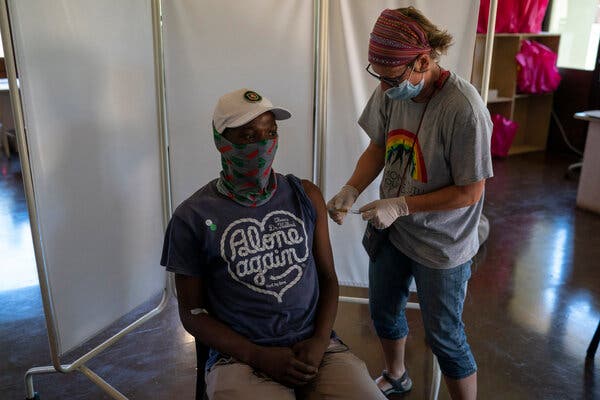
Johnson & Johnson said on Friday that its one-dose coronavirus vaccine provided strong protection against Covid-19, offering the United States a third powerful tool in a race against a worldwide rise in virus mutations.
But the results came with a significant cautionary note: The vaccine’s efficacy rate dropped from 72 percent in the United States to 57 percent in South Africa, where a highly contagious variant is driving most cases. Studies suggest that this variant also blunts the effectiveness of Covid vaccines made by Pfizer-BioNTech, Moderna and Novavax.
The variant has spread to at least 31 countries, including two cases documented in the United States this week.
Johnson & Johnson said it planned to apply for emergency authorization of its vaccine from the Food and Drug Administration as soon as next week, putting it on track to receive clearance later in February.
“This is the pandemic vaccine that can make a difference with a single dose,” said Dr. Paul Stoffels, the company’s chief scientific officer.
The company’s announcement comes as the Biden administration is pushing to immunize Americans faster even as vaccine supplies tighten. White House officials have been counting on Johnson & Johnson’s vaccine to ease the shortfall. But the company may have as few as seven million doses ready when the vaccine is authorized, according to federal health officials familiar with its production, and no more than 32 million doses by early April.
The variant from South Africa, known as B.1.351, could make the vaccine push tougher. Given the speed at which the variant swept through that country, it is conceivable that it could make up a large fraction of infections in the United States by April and therefore undermine the effectiveness of available vaccines.
The two vaccines approved by the U.S. government have been found to be less effective against the B.1.351 variant in clinical trials, a development that has unsettled federal officials and vaccine experts.
Many researchers say it is imperative to vaccinate people as quickly as possible. Lowering the rate of infection could thwart the more contagious variants while they are still rare.
“If ever there was reason to vaccinate as many people as expeditiously as we possibly can with the vaccine that we have right now, now is the time,” said Dr. Anthony S. Fauci, the government’s top infectious disease expert. “Because the less people that get infected, the less chance you’re going to give this particular mutant a chance to become dominant.”
transcript
transcript
Fauci Warns New Virus Mutations Are a ‘Wake-Up Call’
On Friday, Dr. Anthony S. Fauci warned that new virus variants, despite the global vaccine distribution, should offer a wake-up call to the continuing dangers of the pandemic.
-
We’re all aware of the variance that we knew dominated — the U.K. B.1.1.7 , the B.1.351 in South Africa and other variants, such as the P.1. in Brazil. When these variants were first recognized, it became clear that we had to look at, in vitro, in the test tube, whether the antibodies that were induced by the vaccines that we had available would actually neutralize these new mutants. Antigenic variation, i.e. mutations that lead to different lineage do have clinical consequences because as you can see, even though the long-range effect in the sense of severe disease is still handled reasonably well by the vaccines, this is a wake-up call to all of us that we will be dealing as the virus uses its devices to evade pressure, particularly immunological pressure, that we will continue to see the evolution of mutants. So that means that we as a government, the companies, all of us that are in this together, will have to be nimble to be able to just adjust readily to make versions of the vaccine that actually are specifically directed towards whatever mutation is actually prevalent at any given time.
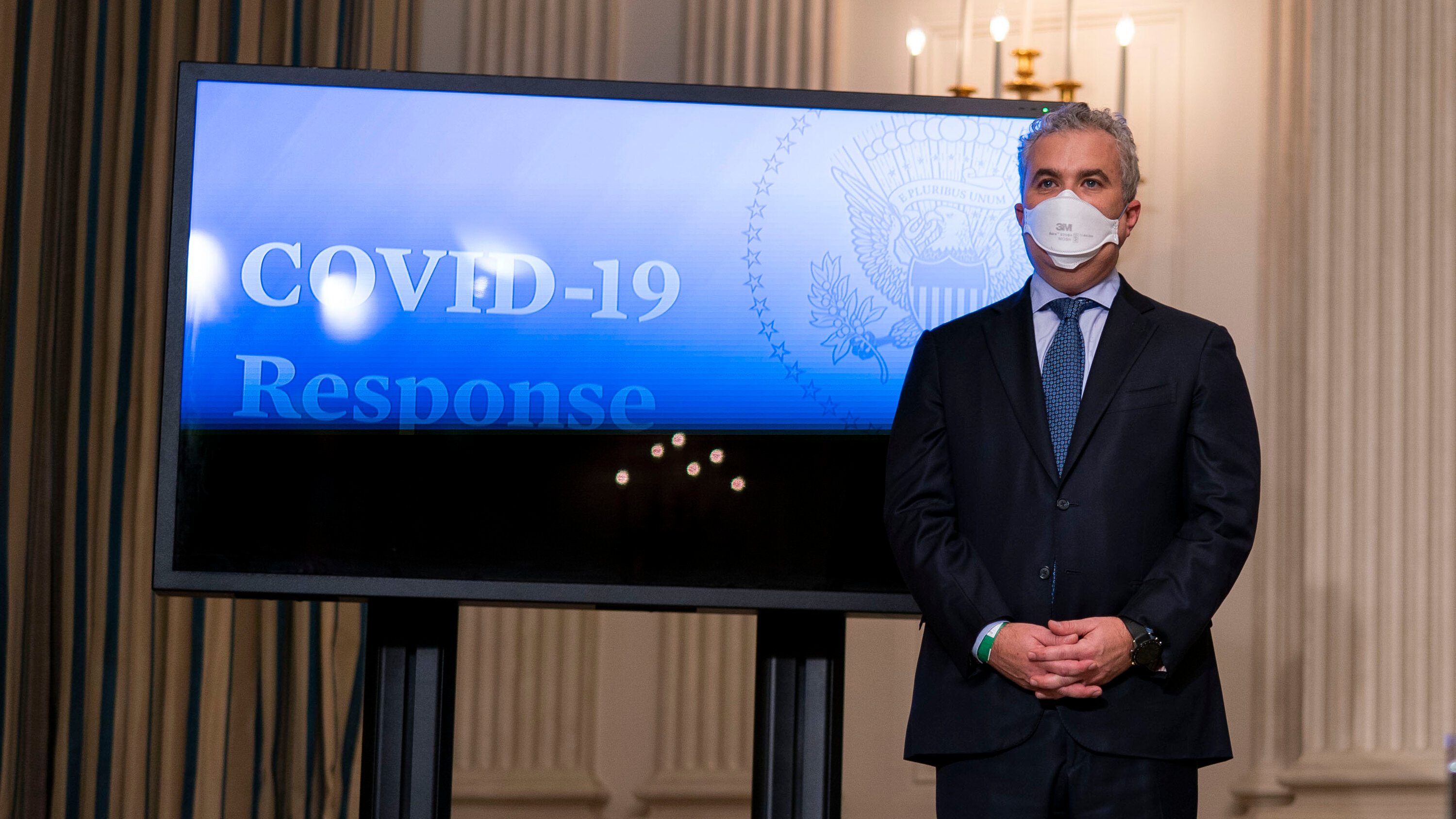
Dr. Anthony S. Fauci warned Friday that new clinical trial results from Johnson & Johnson, showing that its vaccine is less effective against a highly infectious variant of the coronavirus circulating in South Africa, were a “wake up call.” He said the virus will continue to mutate, and vaccine manufacturers will have to be “nimble to be able to adjust readily” to reformulating the vaccines if needed.
Dr. Fauci’s warning, at the White House briefing on the virus, comes amid increasing concern about new and more infectious variants of the virus that are emerging overseas and turning up in the United States. This week, officials in South Carolina reported identifying two cases of the variant circulating in South Africa, and officials in Minnesota announced they had found a case of the variant that was first detected in Brazil.
Dr. Rochelle Walensky, the new director of the Centers for Disease Control and Prevention, who was also at the briefing, said another variant, first identified in Britain, has now been confirmed in 379 cases in 29 states. She said officials remained concerned about the variants and were “rapidly ramping up surveillance and sequencing activities” to closely monitor them. Unlike Britain, the United States has been conducting little of the genomic sequencing necessary to track the spread of the variants.
Dr. Walensky also issued a plea to Americans to continue wearing masks and practice social distancing, and to avoid travel. Earlier this month, the C.D.C. warned that the variant circulating in Britain could become the dominant source of infection in the United States and would likely lead to a surge in cases and deaths that could overwhelm hospitals.
“By the time someone has symptoms, gets a test, has a positive result and we get the sequence, our opportunity for doing real case control and contact tracing is largely gone,” she said. “We should be treating every case as if it’s a variant during this pandemic right now.”
Friday’s briefing, the second in what the Biden White House has promised will be thrice-weekly updates on the pandemic, came just hours after Johnson & Johnson reported that while its vaccine was 72 percent effective in the United States, the efficacy rate was just 57 percent in South Africa, where a variant has been spreading.
Public health officials including Dr. Fauci and Dr. Walensky say the emergence of these variants is heightening the urgency of vaccinations. Dr. Fauci also said Friday that children under 16, who are not currently eligible for the vaccine, will likely start getting vaccinated “by late spring or early summer” if small-scale clinical trials show that it is safe and effective to do so.
He noted that the Johnson & Johnson vaccine is 85 percent effective against severe disease, and called the results “very encouraging,” even though the vaccine is not as effective as those by Pfizer and Moderna, which have emergency approval from the Food and Drug Administration. Johnson & Johnson will now seek its own emergency approval.
“This really tells us that we have now a value-added additional vaccine candidate,” he said.
But Dr. Walensky offered a far more sobering observation. While the daily number of new virus cases has been declining, the figures were still much higher than a period last summer, and deaths currently remain worrisome.
According to data compiled by The New York Times, new virus cases have averaged about 160,000 a day in recent days, compared to about 40,000 new cases a day around early September. As of Thursday, the seven-day average of new deaths was more than 3,200 a day, still near peak levels. The daily death toll has topped 4,000 deaths six times in the United States, including twice this week.
At Wednesday’s briefing by the Biden virus team, Jeffrey D. Zients, Mr. Biden’s coronavirus response coordinator, said the United States is lagging far behind other countries in sequencing the genomes of the new variants — a delay he called “totally unacceptable.” Dr. Walensky said she is working to change that.
“We have scaled up surveillance dramatically just in the last ten days, in fact, but our plans are more than what we’ve done so far,” Dr. Walensky said, adding that the C.D.C. is now asking every state to track for worrisome variants and sequence at least 750 samples from patients per week. In addition, she said, the agency has seven collaborations with universities to scale up surveillance to cover thousands of samples per week.
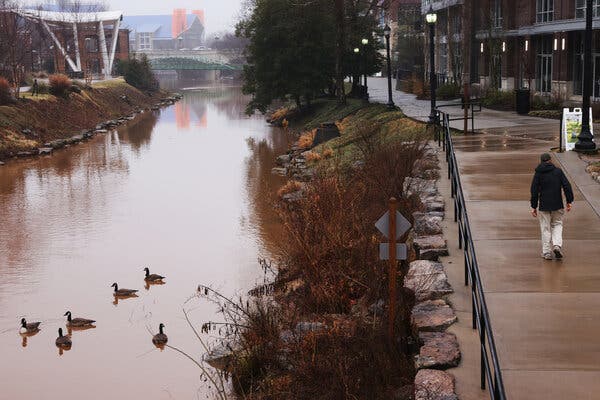
Even before Thursday, South Carolina stood out.
In a nation where new coronavirus cases were finally beginning to edge downward after a grueling two months, South Carolina remained stuck. Although its average number of new cases was decreasing, the state was recording the second-highest number per capita in the country, behind Arizona.
Then came news of the variant.
On Thursday, health officials in South Carolina said they had detected two cases of a more contagious coronavirus variant that first emerged in South Africa. It was the first report of that variant being detected in the United States, and raised questions about how many more variant infections may have gone undetected.
“That’s frightening,” Dr. Krutika Kuppalli, an infectious diseases physician at the Medical University of South Carolina in Charleston, told The Associated Press. “It’s probably more widespread.”
The variant, known as B.1.351, was originally identified in South Africa and has since been found in about 30 countries. It is not just more contagious, there is also evidence that vaccines are less effective against it.
The variant may pose a particular challenge for the United States, which conducts little of the genomic sequencing necessary to track the spread of new forms of the virus. And several variants have caused concern.
Among them are the B.1.1.7 variant first found in Britain and since seen in more than 46 countries and 24 U.S. states, and the P.1 variant, first found in Brazil, which officials in the United States reported having detected this week in Minnesota.
On Thursday, South Carolina’s Health Department said it had identified one case of the variant from South Africa the day before — when it was also notified of a second case by the Centers for Disease Control and Prevention.
The department said the cases involved no known travel to South Africa and no connection between the two patients, both of whom are adults. One was in the state’s Lowcountry region, in the south, and the other was in the Pee Dee region in the northeast.
That suggested that the variant is circulating in the community, and prompted a warning to the public to take precautions.
“The arrival of the SARS-CoV-2 variant in our state is an important reminder to all South Carolinians that the fight against this deadly virus is far from over,” Dr. Brannon Traxler, the health department’s interim public health director, said in a statement. “While more Covid-19 vaccines are on the way, supplies are still limited. Every one of us must recommit to the fight by recognizing that we are all on the front lines now.”
At an online briefing, Dr. Traxler said the same precautions were being taken for the new variant as for other virus cases. Both of the people who contracted the variant were tested in early January and have recovered, she said.
“We do not have concern at this time based on their contact tracing about there being the potential for any mass, widespread transmission,” Dr. Traxler said.
As of Thursday, there had been at least 431,169 cases and 6,903 deaths in South Carolina since the pandemic began.
Gov. Henry McMaster wrote on Twitter that the announcement was “important information for South Carolinians to have, but it isn’t a reason for panic.” He encouraged residents to wear masks and socially distance.
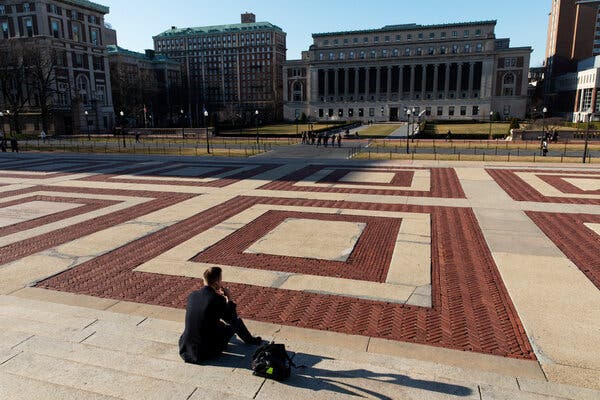
Over 1,100 undergraduate and graduate students at Columbia University have pledged to withhold their tuition for the spring semester to demand a discount for what they see as a lost spring term.
While some universities have brought students back to campus, Columbia has mostly offered online instruction for students and allowed only a sliver of them to live on campus or attend in-person classes.
In response, students are asking the university to reduce their total costs — including tuition, fees, and room and board — by at least 10 percent, following suit of several schools including Georgetown University, Princeton University and Williams College. Columbia College, the university’s undergraduate school, can cost more than $80,000 a year for students not receiving financial aid.
Strike organizers said that both graduate and undergraduate students were participating; the university has more than 31,000 students.
“It’s a reasonable demand,” said Matthew Gamero, 19, a sophomore who is one of the strike organizers. “This is about the university providing an education of its worth, and to have it online is certainly not what we’re paying for.”
“This is a moment when an active reappraisal of the status quo is understandable, and we expect nothing less from our students,” the university said in a statement. “Their voices are heard by Columbia’s leadership, and their views on strengthening the University are welcomed.”
A tuition discount is only one of a series of demands made by strikers. They have also called on the university to reduce funding for campus policing, improve working conditions for graduate students and provide aid for the surrounding West Harlem community.
The tuition strike was officially kicked off after the spring term bill was due last Friday. For undergraduates, the university could impose a $150 late fee and prevent them from registering for summer or fall classes. The university could also penalize seniors by withholding their diplomas until their balance is paid.
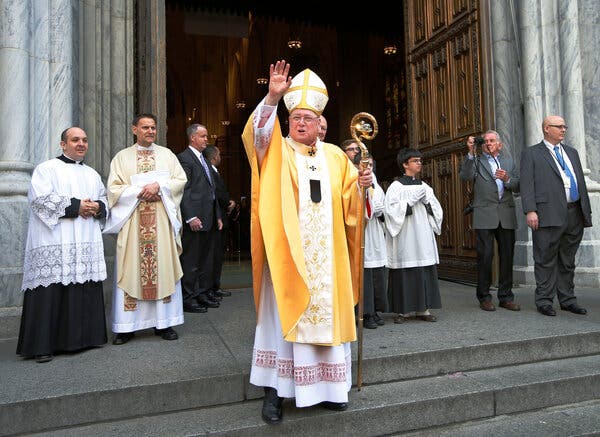
Cardinal Timothy M. Dolan, the leader of the Roman Catholic Archdiocese of New York, was in quarantine on Friday after he interacted last week with a person who later tested positive for the coronavirus, according to a spokesman.
The cardinal’s quarantine had not previously been announced by the archdiocese. Joseph Zwilling, a spokesman for the archdiocese, said the cardinal had been in quarantine since Wednesday but that no announcement had been made because the infected individual had not received the results of their coronavirus test until Thursday.
“He did not have any public events, and all of his meetings were via Zoom, etc.,” Mr. Zwilling said in an email, referring to the cardinal. “We are announcing today because the exposure was confirmed, and the first public events — Mass tomorrow evening and Sunday morning — were coming up, and he will obviously not be present for those events.”
In its statement, the archdiocese said the cardinal “has not tested positive, feels fine, and has no symptoms.” Mr. Zwilling said the cardinal is tested regularly, had tested negative since the interaction, and would be tested again “in a few days.” He did not specify what kind of tests were used.
The cardinal will “continue to follow health and safety protocols as instructed by medical professionals, as will others on his staff who also had close contact with this individual,” the statement said.
Cardinal Dolan is one of the most influential figures in American Catholicism, and the Archdiocese of New York is the second-most populous in the United States, with more than 2.8 adherents living in a territory that stretches from Staten Island into the Hudson Valley.
He had celebrated Mass last Sunday at Saint Patrick’s Cathedral and interacted with other priests and parish personnel, all wearing masks, at that time, according to online video of the service.
global roundup
transcript
transcript
W.H.O. Delivers Update on China Visit
On Friday, the World Health Organization reviewed the details of its investigation into the origin of the coronavirus in China, and what it hopes to learn from the visit.
-
There is a very long list of site visits planned and face-to-face meetings continue. The — the visits will include the Wuhan Institute of Virology, other labs, the Wuhan markets, early responders, hospitals in which the first clusters of cases occurred. We continue to be hopeful that all of the data and all of the meetings that they need will be had. And and just to reconfirm that all hypotheses are on the table, and we’re looking forward, hopefully, to a successful conclusion of the mission. Success in the case of animal human interface investigations is not measured necessarily in absolutely finding a source on the first mission. This is a complicated business, what we need to do is gather all of the data, all of the information, summarize all of these discussions and come to an assessment as to how much more we know about the origins of the disease, and what further studies may be needed for the release of.
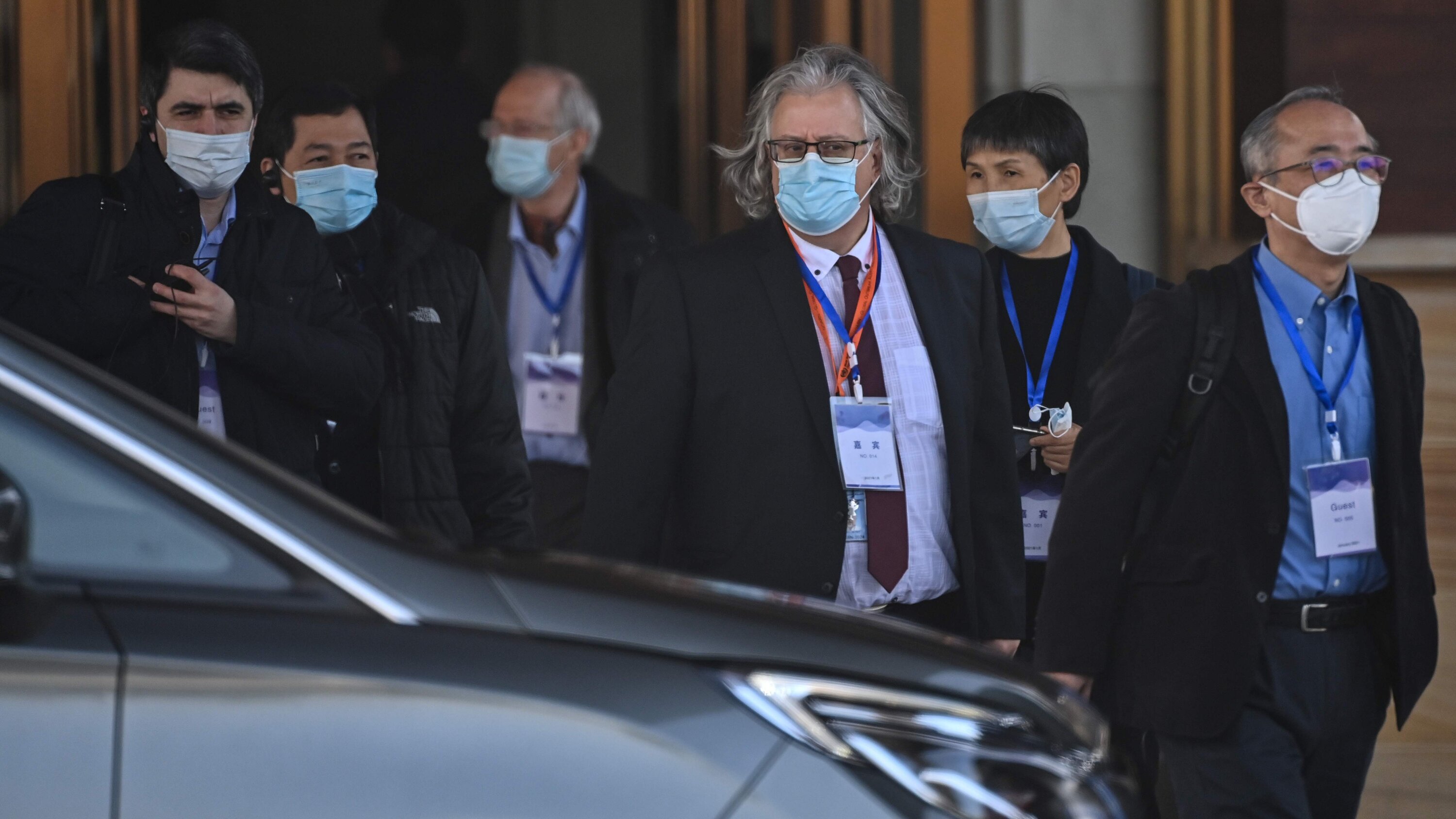
After months of delays, a team of World Health Organization scientists tracing the pandemic’s origin began its field work on Friday in Wuhan, the Chinese city where the coronavirus was first detected.
The W.H.O. said its team of 15 experts planned to visit hospitals, laboratories and a live animal market over the next several weeks in Wuhan, a city of 11 million, where the virus was detected in late 2019.
“As members start their field visits on Friday, they should receive the support, access and the data they need,” the W.H.O. said on Twitter. “All hypotheses are on the table as the team follows the science in their work to understand the origins of the #COVID19 virus.”
The Chinese government had repeatedly sought to delay the inquiry, apparently out of concern that the experts would draw attention to the government’s early missteps in handling the outbreak. But it relented under mounting global pressure.
The W.H.O. experts were first asked to undergo 14 days of quarantine in Wuhan, which ended on Thursday.
They plan to speak with some of the first patients to show symptoms of Covid-19, as well as with medical workers and Chinese scientists, according to the W.H.O. Their fieldwork will include a visit the Huanan Seafood Wholesale Market, where some of the first cases were detected.
They will also visit the Wuhan Institute of Virology and a laboratory operated by Chinese Center for Disease Control and Prevention.
The question of the pandemic’s origin has caused friction between China and the United States, with officials in each country at times blaming the other for unleashing the virus on the world.
Jen Psaki, the White House press secretary, said on Wednesday that the United States hoped for a “robust and clear” international investigation.
Chinese officials, in response, defended the country’s handling of the inquiry.
“We hope the U.S. side will work with China, take on a responsible attitude and respect facts, science and the diligent work of W.H.O. experts,” Zhao Lijian, a spokesman for the Chinese foreign ministry, said at a news conference in Beijing on Thursday.
-
Chinese officials said on Friday that several passengers traveling to China from the United States had falsified coronavirus test results so they could gain entry to the country. The Chinese consulate in San Francisco said the passengers had “changed their test results from positive to negative” and that other travelers had lied about test results. The consulate did not provide details about the passengers or the punishments they might face. China maintains strict border control rules, including a requirement that travelers present results from antibody and nucleic acid tests before they fly. The consulate said the passengers had violated public health laws. “The way they put others at risk is odious,” the statement said.
-
Vietnam recorded nine more coronavirus cases on Friday, including one in the capital, Hanoi, as a new outbreak spread beyond the two northern provinces where infections had first been detected a day earlier. Officials put the number of cases from the latest outbreak at 93 as of Friday afternoon but said that it could reach 30,000, nearly 20 times the number of cases that Vietnam detected during the entire first year of the pandemic. Vietnam has been among the most successful countries in containing the virus, with strict border controls, mask-wearing, contact tracing and isolation of infected people. The latest outbreak comes as officials from the governing Communist Party meet to select the country’s new leaders, an event held once every five years.
-
Hungary’s medicine authority has approved the coronavirus vaccine developed by the Chinese company Sinopharm. “This means that in addition to Pfizer, Moderna, Sputnik and AstraZeneca, we can also count on Sinopharm,” said Dr. Cecilia Muller, the country’s chief medical officer. “We trust that these vaccines will be readily available in large quantities and the immunization process will be completed in larger numbers in less time.” The country’s foreign minister later announced that it had purchased five million doses of the vaccine. Regarding the options, Prime Minister Viktor Orban expressed enthusiasm for the Chinese vaccine on Friday. “I will wait for the Chinese vaccine,” he said. “I trust that one the most.”
-
Spain’s first case of the South African variant of Covid-19 was detected in the port city of Vigo, in the northwestern region of Galicia. Health authorities in Galicia said a 30-year old man who works in the shipping industry returned from a recent work trip to South Africa and tested positive for the variant earlier this month. He had light symptoms and was not hospitalized, they said.
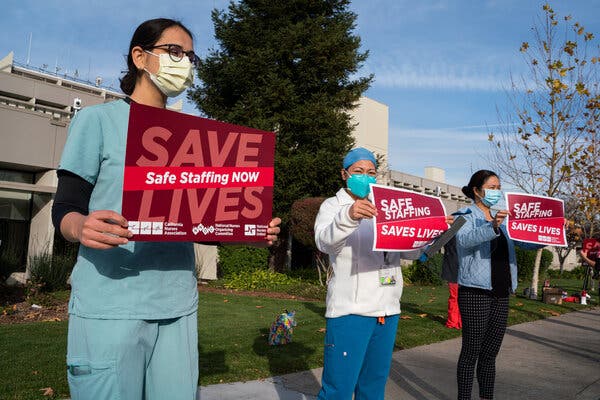
The unions representing the nation’s health care workers have emerged as increasingly powerful voices during the still-raging pandemic.
With more than 100,000 Americans hospitalized and many among their ranks infected, nurses and other health workers remain in a precarious frontline against the coronavirus and have turned again and again to unions for help.
Nurses across the country from various unions are participating in dozens of strikes and protests. National Nurses United, the country’s largest union of registered nurses, held a “day of action” on Wednesday with demonstrations in more than a dozen states and Washington, D.C., as it starts negotiations at hospitals owned by big systems like HCA, Sutter Health and CommonSpirit Health.
“It’s so overwhelming. It’s unlike anything I’ve ever seen before,” said Erin McIntosh, a nurse at Riverside Community Hospital in Southern California, a part of the country that has been among the hardest hit by a surge in cases. “Every day I’m waist-deep in death and dying.”
Hospitals said the unions are playing politics during a public health emergency and say they have no choice but to ask more of their workers.
But health care workers say they have been bitterly disappointed by their employers’ and government agencies’ response to the pandemic. Dire staff shortages, inadequate and persistent supplies of protective equipment, limited testing for the virus and pressure to work even if they might be sick have left many workers turning to the unions as their only ally. The virus has claimed the lives of more than 3,300 health care workers nationwide, according to one count.
“We wouldn’t be alive today if we didn’t have the union,” said Elizabeth Lalasz, a Chicago public hospital nurse and steward for National Nurses United.
Despite the decades-long decline in the labor movement and the small numbers of unionized nurses, labor officials have seized on the pandemic fallout to organize new chapters and pursue contract talks for better conditions and benefits. National Nurses organized seven new bargaining units last year, compared to four in 2019. The Service Employees International Union, which represents Mrs. McIntosh, also says it has seen an uptick in interest.
Dr. Anthony S. Fauci, addressing more than 6,000 American teachers in a video meeting, said Thursday evening that students need to return to the classroom for the country to begin recovering.
“We are not going to get back to normal until we get the children back in school, for the good of the children, the good of the parents and the good of the community,” he said.
Attending a meeting convened by the two national teachers unions, Dr. Fauci brought with him the message of the Biden administration: that all K-8 schools should aim to reopen within the next 100 days. He said they can expect support from Washington in the form of a new stimulus package to fund sanitation upgrades and other safety measures.
As of last month, about one third of American school districts were operating entirely remotely, and Dr. Fauci acknowledged that “mitigating factors” may make the 100-day goal difficult to achieve in some places.
Fielding questions submitted by educators, he did not hesitate to acknowledge potential dangers.
He discussed the emergence of new variants of the coronavirus that appear more contagious and more resistant to vaccines. And he said that while he expected vaccines to prevent inoculated teachers from passing the virus onto their loved ones, there was not yet concrete evidence that would be the case.
As Dr. Fauci spoke, educators at the meeting posted comments — many reflecting frustration and anxiety. They complained that many states had not prioritized teachers for vaccination and said students were not able to effectively stay masked throughout the school day.
Several called for job actions.
“Teachers need to participate in a national strike to protect kids, communities, and teachers,” one wrote.
Dr. Fauci appeared alongside two powerful teachers union presidents: Randi Weingarten of the American Federation of Teachers and Becky Pringle of the National Education Association.
The event took place as some local unions across the country, most notably in Chicago, continue to resist efforts to reopen schools, arguing that doing so before widespread teacher vaccination would risk lives.
Ms. Weingarten has staked out a somewhat more moderate position, arguing that schools can operate safely before teachers are vaccinated by using strategies such as surveillance testing for the virus and updating ventilation systems. She has also asked for teachers with health concerns, or who live with family members with compromised immune systems, to be allowed to continue to work remotely.
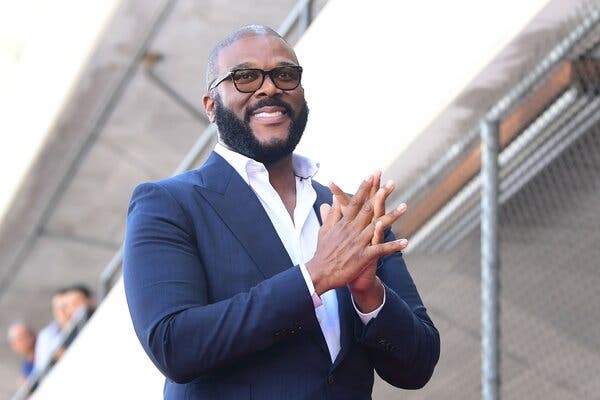
With the pandemic exposing racial disparities in the United States — Black people have died of Covid-19 at nearly three times the rate of white people, according to the Centers for Disease Control and Prevention — health officials have been working to promote vaccinations in Black communities, and to combat doubt.
So doctors in Atlanta turned to Tyler Perry — a popular and prolific actor, director and studio head — to spread the word to Black audiences that the vaccine was harmless. He agreed to interview the experts, turning it into a TV special that aired Thursday night on BET. On the show, he peppered doctors from Grady Health System with questions about the safety of the vaccine, how it was developed, how it was tested and how it works.
At the end of the interview, with his sleeve pulled up, Perry got the jab as cameras rolled.
Perry is one of the most powerful people in the entertainment industry. He built his fortune portraying the character of Madea, a tart-tongued and irreverent matriarch, onstage and onscreen, before retiring her in 2019 to concentrate on other projects, which include running his 330-acre studios in Georgia.
Skepticism about the Covid-19 vaccine among Black people has been deeply concerning to health officials. A recent study by the Kaiser Family Foundation found that one in three Black people was hesitant about vaccine. A recent CNN analysis found that Black and Latino Americans were getting the vaccine at significantly lower rates than white people — rates attributed to, among other factors, lack of access to health care for many Black people, but also to an entrenched mistrust about the medical establishment.
On the BET special, Perry spoke of episodes in history that have led to a lack of faith in the medical establishment and the government, among them the Tuskegee Syphilis Study, in which doctors allowed syphilis to progress in Black men by withholding treatment from them, and the case of Henrietta Lacks, a Black woman who died of cervical cancer in 1951, whose cells were used in research without her knowledge or consent.
“We as Black people have healthy hesitation when it comes to vaccinations and so on and so forth, and even disease,” he said.
Perry said he didn’t want people getting vaccinated just because he had. “What I want to do is give you the information, the facts,” he said. “There’s a lot of misinformation out there.”
transcript
transcript
New York City Sets ‘Aggressive Goal’ of 5 Million Vaccinations by June
Mayor Bill de Blasio said the city is aiming to vaccinate 5 million New Yorkers against Covid-19 by June. He also announced plans to bring city workers back to offices in May and reopen schools for all students in September.
-
We’re going for an aggressive goal, five million New Yorkers vaccinated by June. I am absolutely certain we can do it so long as we have the vaccine. And I am more and more confident because the actions the Biden administration, because the Johnson Johnson vaccine is coming, more and more confident that we will have what we need. I’m going to push hard on the federal government to get every pharmaceutical company in America into this work because they’re not right now. The federal government needs to ensure that they are required to produce vaccine, whether they’re the originator of the vaccine or not. So long as we have the supply, we can reach five million new Yorkers in June, get to a point of community immunity. And we’re going to bring back our city workforce in May and after, because obviously so many are on the job right now. But the folks who work in our offices and do so much important work, we want them back. We want to send a signal to this whole city. We’re moving forward. We want to see the private sector bring workforces back. We are going to have an entirely different situation as we proceed into the spring. By the end of the spring, I think you’re going to see something very different. And we’re going to a great group of folks out there, our vaccine for all core leading the way. Now, a lot of different pieces matter, and one of the most crucial ones that matters to us for today, for our parents, for our families, for our future, tomorrow — our schools, one of the things that says most clearly, we are back is our schools. And so in September, our schools come back fully. We focus on helping kids overcome that Covid achievement gap. Our 2021 student achievement plan focuses on the academic side, but also the emotional side, the mental health needs of our kids after everything they’ve been through.
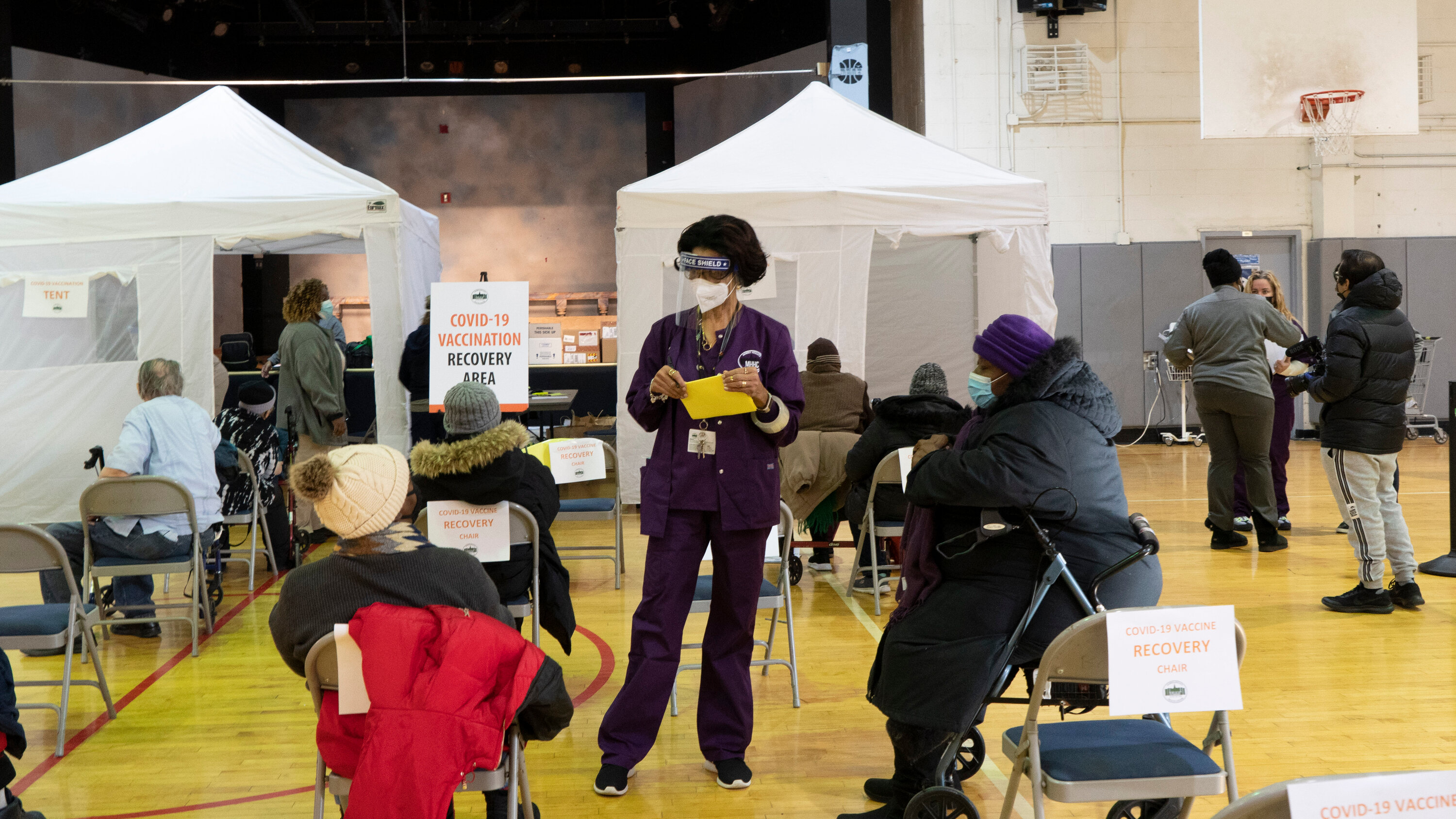
In his final State of the City address, Mayor Bill de Blasio offered a sprawling vision of New York City’s recovery from a pandemic that has taken tens of thousands of lives and destroyed the city’s economy.
The mayor committed to accelerating the city’s vaccination efforts and set a goal of inoculating five million New Yorkers by June.
“We’re going for an aggressive goal,” Mr. de Blasio said at a news conference on Friday morning, adding that “I am absolutely certain we can do it, so long as we have the vaccine.”
On Friday, Mr. de Blasio said that, given an adequate supply of the vaccine, the city could vaccinate half a million people per week, and that he planned to reopen vaccination sites that had closed as more vaccine became available.
Johnson & Johnson announced on Friday that their vaccine was very effective at preventing the virus, but that its efficacy dropped steeply against a more contagious variant in South Africa. White House officials have been counting on Johnson & Johnson’s vaccine, to ease the shortfall of vaccine supply. Unlike the federally authorized vaccines made by Pfizer and Moderna, Johnson & Johnson’s vaccine is effective after only one dose. But the company may only have about seven million doses ready when the F.D.A. decides whether to authorize it, according to federal health officials familiar with its production, and about 30 million doses by early April.
Mr. de Blasio also noted on Friday that the citywide seven-day average rate of positive test results was 8.63 percent, and city data show that in more than 30 city ZIP codes the rate is above 10 percent.
During the State of the City address, the mayor also said he would begin in May to bring back to offices the thousands of city employees who have been working remotely, and would safely reopen schools for all students in September.
“New York City’s vaccination effort is the foundation of a recovery for all of us,” the mayor’s 18-page recovery plan says. “With every vaccine shot, New York City moves closer and closer to fully reopening our economy, restoring the jobs we lost and ensuring equality in our comeback.”
If the federal government provides enough stimulus dollars to the city, Mr. de Blasio said, he will create a City Cleanup Corps of 10,000 temporary workers to focus on beautifying the city — an idea he compared to President Franklin D. Roosevelt’s Works Progress Administration during the Great Depression.
Mr. de Blasio also proposed two plans to help small businesses: a $50 million “recovery tax credit” program for businesses that have faced hardships from the pandemic, and a $100 million “recovery loan” program to help shops stay open. The city will provide low-interest loans of up to $100,000 to roughly 2,000 small businesses, according to the mayor’s plan.
But Mr. de Blasio has also warned that the city is facing major budget cuts and layoffs. He recently announced that the city’s property tax revenues are projected to decline by $2.5 billion next year, driven by a drop in the value of office buildings and hotel properties that have emptied out during the pandemic.
Gov. Andrew M. Cuomo announced on Friday that restaurants in New York City, major drivers of its economy that have struggled under pandemic restrictions, could reopen for indoor dining at 25 percent capacity starting on Feb. 14. Mr. Cuomo closed them last month as virus numbers ticked up.
Mr. de Blasio and Mr. Cuomo have expressed optimism that President Biden, along with a Democratic-led Congress, will bring substantial assistance to the city. Mr. de Blasio also called for higher taxes on wealthy New Yorkers in his speech — a policy he has pushed for years, but that Mr. Cuomo has opposed.
Mr. de Blasio noted that more than 100 billionaires in the state increased their net worth by billions of dollars during the pandemic and called again for a redistribution of wealth.
“There is clearly enough money in New York to invest in a fair and fast recovery — it’s just in the wrong hands,” he said.
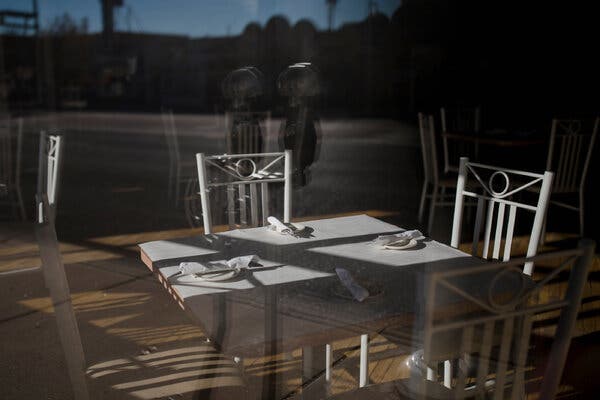
The economic upheaval caused by the pandemic is changing communities across the country. Hundreds of thousands of businesses have closed, leading to lost livelihoods and empty storefronts. Many of these businesses were neighborhood pillars, beloved locales that we returned to over and over again. In your neighborhood, perhaps the bar where you met friends after work, the restaurant where your family celebrated birthdays or the bookstore where you loved to browse is now gone.
The New York Times would like to hear from you about a local business that has shut down. Why was it special to you, and what do you miss about it? How is its absence altering the fabric of your community?
We may contact you with a few follow-up questions. And if you can, please share a photo of the business as well.







